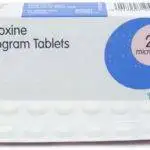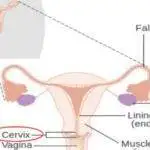
Table of Contents
The cheapest silver metal tier health insurance plan in all of Michigan in 2022 is the Ambetter Balance Care 30. It costs $289 monthly. The most affordable insurance covers are by the Blue Cross Blue Shield of Michigan, Priority Health, and Meridian Health Plan.
Cheap and affordable health insurance is usually taken to be an insurance plan that has the least premium. This is a misconception because premiums aren’t the only factors to be considered according to the Department of Insurance and Financial Services (DIFS).
Lower premiums usually translate to higher deductibles and what is seen to be a cheap plan comes with such trade-offs that if the benefits are properly weighed against the costs, may turn out to be expensive.
For clarity, there is a distinction between affordability and cheapness. A health plan could be affordable but relatively more expensive than others with the same level of coverage.
Another plan could be cheap based on having comparatively more benefits, yet unaffordable so long as you can’t meet up with your part of the deal with the insurer.
So health insurance plans that have you pay more out-of-pocket costs or offer you less coverage for less premium may not be cheap just because of the low premium.
In insurance, your ability to comfortably meet up with your part of the bargain with your insurer is what defines affordability. In this article, we’ll delve into affordable health insurance in Michigan.
keep in touch by signing up for my periodic newsletter:
Top health insurance providers in 2022.
There used to be 8 health insurance providers in Michigan but 2022 has seen the entry of an additional 2 carriers, bringing the number to a total of 10 companies. Most counties have at least 4 insurers in operation today. The old and new insurance companies in Michigan listed in alphabetical order include:
1. Blue Care Network of Michigan: This is the largest HMO in Michigan formed in 1998 from the merger of 4 independent Health maintenance organizations (HMO). The HMOs grew from health plans acquired in 1975 by the Blue Cross Blue Shield of Michigan. It’s nonprofit.
2. Blue Cross Blue Shield of Michigan Mutual Insurance: It was founded and has been operating since 1980 with a commitment to ensure Michigan residents get improved quality health coverage.
3. McLaren health plan community: It is an HMO offering various health plans including Medicaid, Medicare, and Healthy Michigan.
4. Meridian Health Plan of Michigan incorporated: This is a provider of government health plans like Medicaid and Medicare but has been acquired by WellCare Health Plan.
5. Molina Healthcare of Michigan incorporated: The company offers health insurance coverage on Medicaid and Medicare. For members that qualify for both Medicaid and Medicare, it also offers integrated Medicaid/medicare dual insurance.
6. Oscar health insurance company: The company was started in 2012 and just like the others, aims to see that you get affordable and high-quality healthcare coverage.
7. Physicians health plan: It was founded in 1980 and is a subsidiary of Sparrow Health Systems.
8. Priority health: It’s a nonprofit HMO formed in 1992 by the merger of Butterworth and Lakeshore HMOs and is reputed to be the 2nd largest in all of Michigan.
9. US health and life insurance company: Has been operating as an HMO since 1997 but in 2015 became part of Ascension, which is the largest nonprofit health system.
10. UnitedHealthcare: It has been around since 1977 and offers coverage for pregnant women and newborns, children, adults, plus people with disabilities, including dual coverage for those who are eligible for both Medicare and Medicaid.
Note: If you are shopping for a cheap plan, starting with the insurers highlighted in blue may serve your interests.

The monthly cost of health insurance in Michigan.
Whereas the average monthly cost of a silver health insurance plan for an individual at 40 years is $541, according to valuepenguin, that for Michigan is lower at $410 which is cheaper by over $131. Michigan’s cheapest silver health insurance plan is the Ambetter Balance Care 30 which costs $289 monthly.
According to the Michigan Department of Insurance and Financial Services (DIFS), several factors are considered in determining these costs. These are:
1. Age: The older you are, the costlier it gets. Part of the reason for the increment is that aging comes with significantly higher chances of needing medical care, especially long-term care insurance.
2. Gender: Females are generally known to pay more than their male counterparts for good reasons. The insurance companies are smart people.
3. Chosen plan: A plan that offers more coverage or benefits costs more. This also aligns with the metal level you choose. Bronze means lower premiums but more out-of-pocket costs whereas platinum has fewer out-of-pocket costs but much higher premiums.
Your choice should be guided by how often you need medical care.
4. Your location: Prices for the same amount of coverage differ in different counties. Finding out the average cost in your county should serve as a guide in choosing an affordable plan. You can view the plan available in your location online.
5. Insurance provider: Different insurers have different prices for an equal amount of coverage. This also has something to do with your location.
6. family size: The larger the family size, the costlier. Prices also vary according to the age of dependents.
7. Tobacco use: With the negative impact of tobacco on health, smoking triggers higher costs of health insurance because the companies know this. Quitting smoking saves not just lives but dollars in health insurance premiums. Share on X
How to get affordable health insurance.

Of all the 10 listed health insurance providers in Michigan, the Meridian Health Plan of Michigan, Priority, and Blue Cross Blue Shield offer the cheapest silver plans in most of the counties across the state. You could enroll in any of these during the annual open enrollment period.
Open enrollment periods are the best times to:
- Enroll in a plan for the first time.
- Renew an existing plan.
- Change an existing plan for one that aligns with your current health needs.
If you missed an open enrollment period, there are what are called special enrollment periods (SEP) during which you could still enroll or change your health insurance plan. This applies only if you’ve had a qualifying life event and you applied within 60 days of the loss of your insurance.
Qualifying life event could be any one of the following:
- Change of location.
- Change of household size via marriage, adoption, or birth.
- Loss of job or income, etc.
Apart from the special enrollment privilege, another option is buying short-term insurance to get covered till the next open enrollment. However, the duration of coverage provided by Michigan state short-term insurance is below the federal guidelines.
This is because it’s limited to only 185 days and is non-renewable except if you buy from another insurer at the end of that period.
Whether you are right on time to purchase a health plan during open enrollment or a special enrollment period, in Michigan you may have to do this through any one of the following channels:
1. From a health insurance provider:
2. Marketplace:
3. Your employer or partner’s employer.
4. Your school(for college and university students),
5. Medicaid.
6. medicare.
The whole process and the variety of available options can be overwhelming but some government-approved agents can help you scale the hurdles and make the right choices without charging you for their services. These are called assisters or navigators.

How to get free health insurance.
If you are looking at getting a free health care insurance plan, think of Medicaid. Michigan Medicaid offers remarkably low to free health insurance plans but only to people with low income or very low income in addition to any one of the following.:
- US, citizens,
- Legal aliens,
- Presence of disability in your household.
- You are responsible for a 17-year-old or younger.
To be considered poor enough for this program, you are expected to have an annual income of not more than $17, 131 for a single individual.
To calculate for families, you are to add the sum of $6,038 to the $17,131 for each dependent. That gives you the maximum household income that qualifies you for Michigan Medicaid.
For instance, for a family of 2, the maximum annual household income that makes it qualified for Medicaid is $23,169. This is the sum of $12,131 and $6,038. Then for a family of 3, you’ll get this:
$17,131 + 2($6,038)= $29,207.
Application for the Medicaid insurance plan can be done at any local Department of Human Services (DHS).
Let me know if this is helpful. You may also be interested in knowing how much long-term care insurance costs or a health condition that would need insurance coverage.






























































































































































You are so intelligent! Your personal stuffs great. At all times maintain it up!
Simply great website.